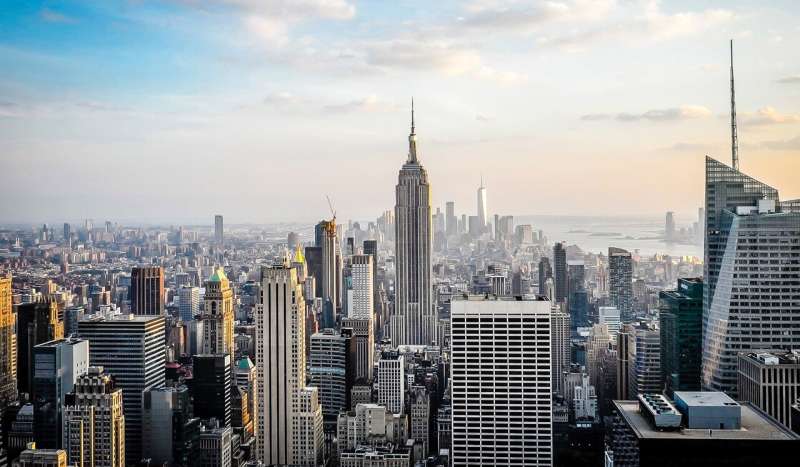Traditional downtowns are dead or dying in many US cities. What's next for these zones?

The hollowing out of U.S. cities' office and commercial cores is a national trend with serious consequences for millions of Americans. As more people have stayed home following the COVID-19 pandemic, foot traffic has fallen. Major retail chains are closing stores, and even prestigious properties are having a hard time retaining tenants.
The after only a year in downtown San Francisco in May 2023 received widespread coverage. Even more telling was the high-end department store Nordstrom's decision to after a 35-year run.
In New York City, office vacancy rates have since 2019. Chicago's , a stretch of high-end shops and restaurants, had a in spring 2023.
A recent study from the University of Toronto found that across North America, downtowns are recovering from the pandemic and that "older, denser downtowns reliant on professional or tech workers and located within large metros" are struggling the hardest.
Over more than 50 years of , I have watched U.S. cities go through many booms and busts. Now, however, I see a more fundamental shift taking place. In my view, traditional downtowns are dead, dying or on life support across the U.S. . Local governments and urban residents urgently need to consider .
Decades of overbuilding
U.S. downtowns were in trouble . Today's overhang of excess commercial space was years in the making.
Urban property markets are speculative enterprises. When the economy is booming, individual developers decide to build more—and the collective result of these rational individual decisions is excess buildings.
In the 1980s, the Reagan administration allowed a that effectively lowered tax rates for developers. With financial globalization, foreign money , especially to very big development projects that could absorb large pools of liquid capital looking for relatively safe long-term investments.
Years of low interest rates meant cheap money for developers to finance their projects. City governments were eager to greenlight projects that would generate tax revenues. In many downtowns, office space now takes up between of all real estate.
The pandemic push
COVID-19 finally burst this 40-year bubble. During pandemic lockdowns, many people worked from home and became comfortable with virtual meetings. Telecommuting grew as conventional commuting declined. Workers with the resources and job flexibility moved from cities to so-called "" where housing was more affordable and parks and outdoor activities were close at hand.
Now, many employers want their staffs to return to the office. However, , especially against spending full five-day weeks in the office. New technologies have made it easier to work from home, and a tight labor market has strengthened employees' bargaining power.
There are significant knock-on effects. A range of businesses, including restaurants, retail stores and services, rely on downtown office workers. are in the downtowns of the 100 largest U.S. cities.
In San Francisco, for example, a typical office worker . Now, with nearly 150,000 fewer office workers commuting downtown, about 33,000 people in the service and retail sectors have lost their jobs.
Terminal decline?
Today, many cities are confronting the prospect of an , with a massive oversupply of office and retail space, fewer commuters and a looming urban fiscal crisis. Washington, D.C., is an illustration.
In December 2022, the city had approximately 27,000 fewer jobs than in February 2020, and it faced a growing from declining property taxes due to downtown business closures and fewer property purchases. The District of Columbia government projects that city revenues will decline by US$81 million in fiscal year 2024, $183 million in 2025 and $200 million in 2026. Washington's Metropolitan Transit Authority faces a because of a sharp decline in ridership.
In the Communist Manifesto, Karl Marx and Friedrich Engels famously wrote that under the pressures of dynamic capitalism, "." They could have been describing the ever-changing built form of the United States, with people and money flowing to Main Street stores through the 1960s, then to suburban malls in the 1970s and 80s, then for revived downtowns and online shopping. Now, traditional downtowns may be in similar terminal decline.
Repurposing office space
What can cities do with their surplus office spaces? In some cities, such as , investors are purchasing deeply discounted buildings, demolishing them and finding more profitable uses for the land, such as residential and mixed-use buildings. Other options include or more specialized applications such as .
But conversion is no panacea. There are many regulatory hurdles, although cities are to make the process easier. Many office buildings have large internal floor spaces that makes it expensive to divide them into individual residential units that all receive outdoor light. And glass-sheathed buildings with windows that don't open are prone to overheating.
Another approach is making downtowns more alluring, through steps such as and small businesses, offering and promoting events and eateries. The city of Columbus gives out for downtown restaurants.
Worcester, Massachusetts, offers financial aid for small businesses that . San Francisco is considering a proposal to convert its downtown Westfield Centre Mall, formerly home to Nordstrom and other retailers, into a .
In my view, the growth of commercial office complexes that has long been promoted by investors, developers and federal and city governments has probably come to an end. The nation no longer needs so much office space. It will require to find out what people want instead. Some communities may focus on housing, while others opt for more recreational opportunities or green spaces.
The downtown filled with acres of banal office blocks, with accompanying ground-level retail stores and shopping malls, is a relic of the 20th century. It's daunting but exciting to envision what will take its place.
Provided by The Conversation
This article is republished from under a Creative Commons license. Read the .![]()



















